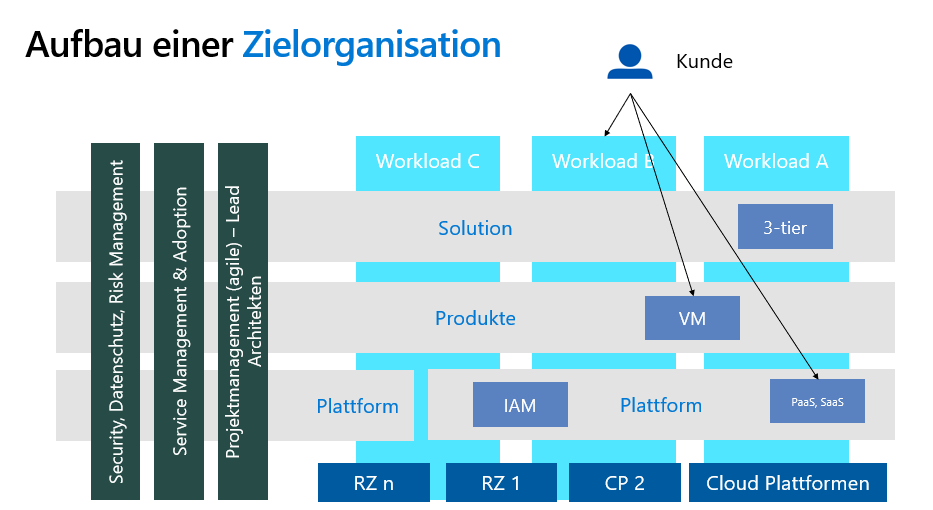From Silos to Products: Rethinking Cloud Organizations
From Silos to Products: Rethinking Cloud Organizations
Adopting cloud technologies is more than a technical upgrade—it’s an organizational paradigm shift. To succeed in the cloud, organizations must not only modernize infrastructure but also rethink how they structure teams, manage responsibilities, and deliver value. This post explores why transitioning from project-based to product-oriented models is essential—and how Microsoft’s Cloud Adoption Framework (CAF) supports that journey.
Why Organizations Must Rethink Their Structure
Traditional IT organizations are often siloed: infrastructure, development, and operations work in isolation. Projects are planned, approved, and executed independently. This model struggles in the cloud era:
- Slow response times due to rigid processes
- High coordination overhead between teams
- Limited innovation speed
- Lack of end-to-end accountability
Cloud demands agile, cross-functional teams that own products from ideation to operation.
Key Insight: Cloud adoption is not just an IT project—it’s an organizational transformation.
From Projects to Product-Centric Models
Microsoft distinguishes two organizational models:
| Project-Centric | Product-Centric |
|---|---|
| One-off projects with fixed budgets and timelines | Continuous development and operation of products |
| Resources allocated per project | Stable, cross-functional teams |
| Focus on delivery | Focus on value creation and user feedback |
| Annual planning | Iterative and incremental planning |
In a product-centric organization, long-lived teams take ownership of a product or service. They work iteratively, deliver value regularly, and respond flexibly to changing needs.
The Cloud Center of Excellence (CCoE)
A key enabler of this transformation is the Cloud Center of Excellence. It helps:
- Build a modern, agile IT organization
- Establish reusable, secure deployment packages
- Standardize cloud-native tools and processes
- Orchestrate collaboration across platform, product, and security teams
The CCoE is not a control body—it’s an enabler of product-oriented work. It creates the conditions for autonomy, while maintaining governance and security.
Cultural Shift: From Control to Trust
Organizational change goes hand in hand with cultural change. As Satya Nadella puts it:
“As a culture, we are moving from a group of people who know everything to a group of people who want to learn everything.”
Cloud requires a culture of responsibility, transparency, and continuous improvement. Teams must be empowered to act independently—with clear goals, but without micromanagement.
Success Factors for Organizational Change
To make the transformation work, organizations need:
- Executive Sponsorship: Leaders must actively support the change
- Product Ownership: Clear ownership structures for workloads and platforms
- Transparency: Visible backlogs, blockers, and progress
- Agile Processes: Iterative planning, regular reviews, and retrospectives
- Cross-Functional Teams: Dev, Ops, Security, and Business working together
- Right Skills: Build technical and organizational capabilities
“Shift the value of the IT department from ‘Build, Own and Run’ to enabling others to act autonomously.”
Conclusion
Cloud is not just technology—it’s a catalyst for organizational transformation. Those who embrace the shift lay the foundation for greater speed, innovation, and user-centricity. The Cloud Adoption Framework offers proven guidance to support this journey.

